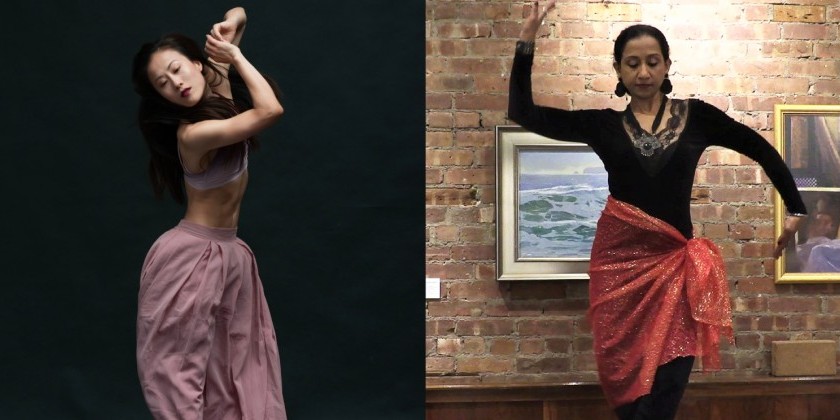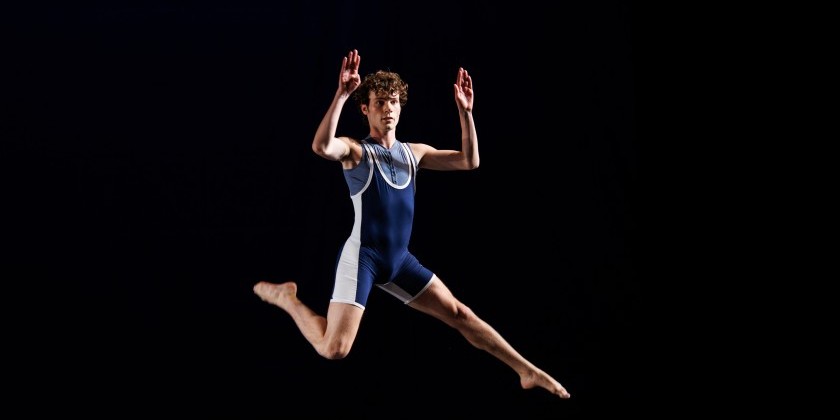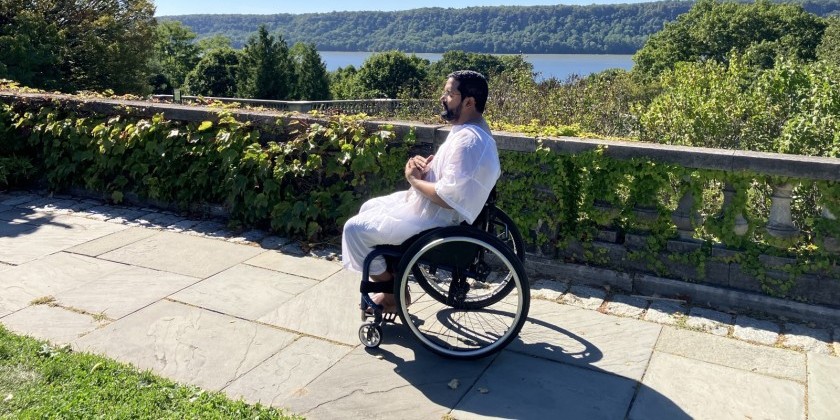THE DANCE ENTHUSIAST'S A TO Z: R for Heather ROBLES and Kendra ROSS
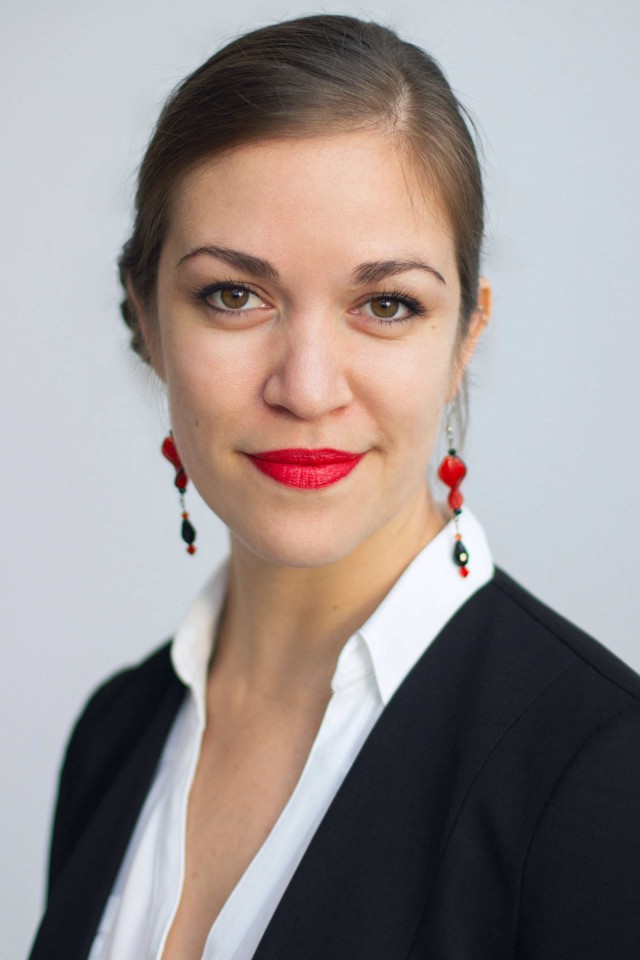
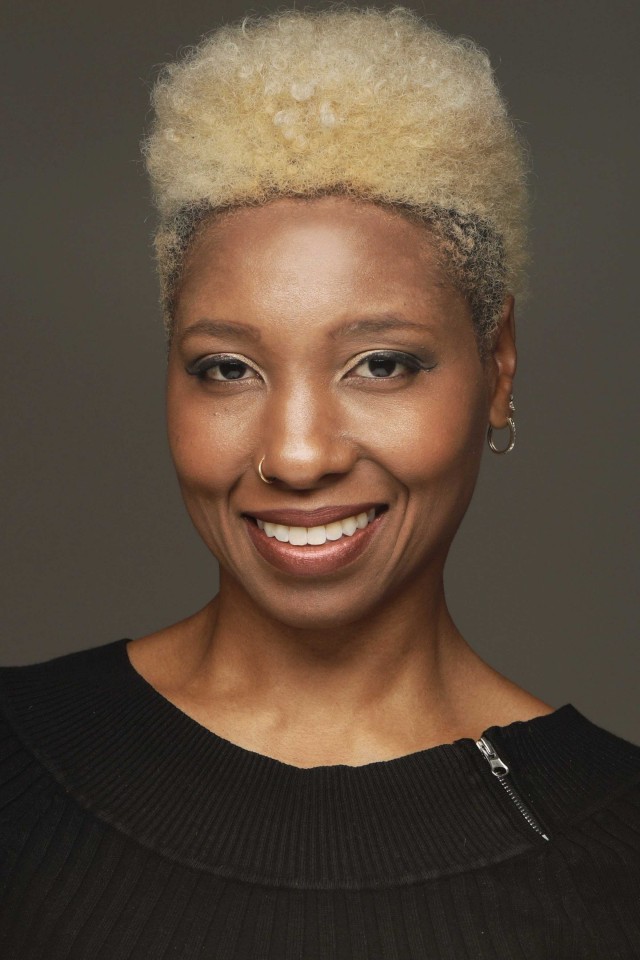
Heather Robles
Biography
Heather Robles is a Latinx cis woman of indigenous Mexican descent, a dance educator, a teaching artist, and producer based in Brooklyn. She is also the Executive Director of The New York Dance & Performance Awards/The Bessies, the Artistic Director of Alma Dance Company, a founding member of and dance activist with Suzzanne Ponomarenko Dance, and a certified birth doula with Our Birth Doula. Robles has collaborated with Sidra Bell, Pavel Zuštiak, Nathan Trice/rituals, Renegade Performance Group, Buglisi Dance Theater, Alison Cook Beatty Dance, Fredrick Earl Mosley, and Catapult Entertainment to name a few. Follow her on Instagram at @danceinfinitely.
Image captions & credits: Cover image of Heather Robles by John Sobczak | Headshot of the artist by AK47 Division.
Kendra Ross
Biography
Kendra J. Ross is a proud Detroit native working as a dancer, teaching artist, choreographer, arts administrator, facilitator, and community organizer in her current home, Bed-Stuy, Brooklyn. She was recently the 2022 BedStuy Create Change Artist in Residence, a member of Urban Bush Women’s B.O.L.D Network, the Founder and Director of STooPS, and a member of Movement of the People Dance Company. Ross has worked with Urban Bush Women, Andrea E. Woods/ Souloworks, Vissi Dance Theater, Monstah Black, MBDance, Moving Spirits Dance Company, Oyu Oro, and Ase Dance Theater Collective among others. Follow her on instagram at @thekendrajbostock.
Image captions & credits: Cover image of Kendra J. Ross by Hisae Aihara | Headshot of the artist by Bostock Images.
What made you decide to enter this profession?
Robles:
I don’t recall deciding; I have simply always danced and known I would be a dancer. But at age six, I officially informed my parents that I would be living in New York as a dancer, after seeing my first Broadway show, The Phantom of the Opera.
Ross:
Deep passion and a little insanity. Since I can remember, I have always loved to dance; it has been the means by which I understand the world. I also wanted to prove my high school chemistry and math teachers wrong when they thought me being a dancer was a bad idea. Dance has a way that connects people despite other societal dividers and I continue to learn and benefit from connecting with others in this way.
Who has been the biggest influence on your life and why?
Robles:
My parents, Rita and Chris Robles. They have always encouraged me to be an artist, to go for what I want, and have always believed in me. They still show up for me at age 36 and love me no matter what. That means everything to me.
Ross:
I would have to say two people: my grandmothers.
My maternal grandmother Hattie Boler was my first audience member for my living room performances as a kid and would always hype me up by saying, “Girl, go ahead and shake that booty.” To this day that is my pre-show mantra.
My paternal grandmother Quessie Wilson instilled a sense of style, feminine power, and connection to history that influences my work today.
I can always rely on __________ to cheer up.
Robles:
Adrienne Marie Brown’s memes.
Ross:
Laughter and cookies.
I practice self-care by __________.
Robles:
Taking my time in the mornings to reflect, sip my tea, hug my dog, and quietly usher in a new day near my plants.
Ross:
I meditate and pray everyday. It keeps me grounded, helps me process, and helps fortify me to have the strength, patience, and faith to overcome challenges. Also, being more intentional about taking time off (although that part is really hard!).
Pets or plants. Either way, why and what kind?
Robles:
I home any plant that I can’t kill: cacti, aloe, ZZs, bromeliads, spider plants, corn plants, bamboo, philodendron...
My dog Frijolito is a snorty little black and tan pug-chihuahua who is food-driven, just like me. I love the company of life in my apartment.
Ross:
Plants. Honestly, I stay so busy that any pet would be mad that I am never around and die from loneliness. Plants are low maintenance companionship. My African violet is my favorite plant now, but my absolute favorite types of plants are the ones I can eat.
Cooking or eating out? Either way, what is your favorite meal?
Robles:
Thai or Indian out. Cooking Mexican food in. Fresh roasted green chiles on anything makes me feel like the sun is going to explode out of my heart, in a good way.
Ross:
I love both. Cooking can be meditative, and ever since the pandemic, I love figuring out how to make things from scratch that I normally buy pre-made.
I also love eating out, especially because New York has so many fantastic local restaurants with global cuisine I would not make at home. My favorite meal is definitely anything Thai; I really love fried calamari with sweet chili sauce and vegetable glass noodles. Pad Thai is a close second. And then a cookie with oat milk.
If you could relive the past or catch a glimpse of the future, which would you pick and why?
Robles:
I’d like to smell the air before humans existed, see the sky filled with Pterodactyls, look at prehistoric flora and fauna, and observe how dinosaurs moved and sounded. As a somatic experience, wouldn’t that be amazing?
Ross:
That depends. If I could only relive or catch a glimpse of my personal past/future I wouldn’t. I work so hard to be present, stop using could’ve/should’ve and develop my faith in the uncertainty of the future that I think reliving or previewing would throw me off my path.
However, if I could go to any moment in history or the future I would relive the past. I would want to go see Joesphine Baker, Michael Jackson, and Prince live in concert.
What is your personal approach to handling challenging people or situations?
Robles:
For challenging people: to love them as much as I possibly can. When I can’t seem to do that, I imagine them as a baby, perfect and new, without all the crap the world taught them. Then I find I can love them.
Ross:
I am not a fan of conflict, but I don’t avoid it. So if possible, I try to take a moment to think. My family, friends, and partner are great thought partners and help me to process by opening my perspective, telling me if I’m wrong, or affirming my inclinations. With them, I try to come up with a plan of how to address the challenge. I will voice my concerns and try to offer solutions on how to improve. If I see no shifts are made, I walk away.
How has your personal life changed since the pandemic?
Robles:
My body is different, and it doesn’t seem to want to go back. My rhythms have changed, and don’t want to go back either. I have slowed down, feel more present to what matters, am clearer of my boundaries, and have budgeted more time to do things that make me happy, and be with people who are important to me.
Ross:
The pandemic was a huge pause that forced me to evaluate what I was doing and why. I have been blessed with some great opportunities, but I realized I had spent A LOT of time and energy working for others, because I was scared I wouldn’t be able to “make it” off my own work. It was during the pandemic that I took a leap to really delve into my choreographic and community organizing work, and thus far, the universe has supported it greatly.
How has your art or approach towards art changed since the pandemic?
Robles:
I don’t take art for granted, and have found deeper joy in creating since the start of the pandemic. I feel immensely fortunate to create. I believe anyone’s art deserves to exist, period. I appreciate every artist who puts themself out there. It is courageous, almost impossible, a life force itself, and that moves me.
Ross:
Although I have always created work about my community, community engagement and participation have become even more important in my work. During the pandemic, I was in some ways stuck in my neighborhood of BedStuy, but this made me want to connect with it and the people more. My work shifted by having community members participate more deeply.
What is the last show you saw and loved?
Robles:
Thomas Ford’s MFA thesis Queering Blackness at Hunter College. Raw, true, and bold, he brought out personal experience in beautiful and powerful ways. I was deeply moved by his generosity and vulnerability in this performance.
Ross:
I saw For Colored Girls on Broadway and it was outstanding. The choreography, the performers, the adaptations of the original text making it more contemporary, the costumes… Loved everything!
What is your pre-performance (as a spectator or a performer) ritual?
Robles:
As a performer, to lie on the theater floor and stare up at the rafters, imagining the performers and ghosts who have presenced the same stage I will perform on. I ask to be invited in, and imagine us sharing the stage together through time.
Ross:
I try to take yoga or do a gentle workout at the gym the morning of the show. I make sure I eat a good meal just before call time. I normally warm up with some Pilates, stretching, and an improv jam to my favorite song at the time. I say a little pray, tell myself to go ahead and shake my booty, then SHOWTIME!
I wish I could be a fly on the wall for this moment in dance history: __________.
Robles:
I would love to be there for the first of anything: the first time an audience saw Martha Graham do a contraction, the first time Judith Jamison performed Cry, the creation of contact improvisation, or when Pina Bausch premiered the Rite of Spring. Artists are always breaking boundaries, and I feel lucky to witness their ingenuity.
Ross:
Seeing Diane Harvey, Dudley Williams and Baba Chuck Davis rehearse and perform Eleo Pomare’s choreography.
I have / have had the most fun performing __________’s choreography or trying out this genre of dance _____________.
Robles:
Nathan Trice’s choreography in Strange Love. It remains one of the deepest and meaningful artistic experiences of my life.
Ross:
Adira Amram and Jessie Colon’s choreography. Adira Amram is a comedic singer, so the choreography was funny, cheeky, but still fierce. It was great to step away from the often serious world of modern dance.
Is there a book, podcast or TV program you recommend to others and why?
Robles:
Women Who Run with the Wolves by Clarissa Pinkola Estés, PhD. This book has resurrected my connection to the deep inner wild woman. Any art that does that can change the world.
Ross:
I have been listening to Brene Brown’s Dare to Lead and Unlocking Us podcasts. She is a master of interviewing folk who give advice on working from a value-centered place in our personal and professional/organizational lives. I love her because as a researcher, she knows what to do, but is honest that it is hard and that she often doesn't get it right. I feel like I am on the quest to be a better person and leader along with her.
This city or country is the best place I have ever been to for art: __________.
Robles:
Guatemala. Art is everywhere: in the houses, murals, textiles, clothes made and worn by women, music, storytelling, and of course, the dances.
Ross:
This is hard, but I would have to say NYC. There is so much incredible art here from around the world, it’s astounding. In my experience, nothing compares.
Which social media app are you most drawn to?
Robles:
Instagram for the memes, dance videos, and excellent resource sharing of pregnancy, labor, postpartum, and other cycles and experiences of the womb. Being a certified birth doula, half of my feed is birth-centered.
Ross:
I love Instagram! I really enjoy the visuals and videos. Social media can be a bit overwhelming, so I mostly focus my attention on one platform, and Instagram is the one that stuck.
What advice do you have for young people in your field?
Robles:
You don’t have to wreck yourself to work in dance, even if those around you are. If you can imagine the life you want, you can create it over time. Don’t listen to folks who say that you’re not enough. They may simply feel threatened that your path is successful but different from their path. Focus, and take action towards your vision every day. Progress is made inch by inch. Be patient with yourself. If you don’t find the path toward your personal thriving, imagine and forge it yourself. You can, and when you do, you will find others who are your people. By default, you will also have made the field better by creating healthier pathways for others. Celebrate those thriving alongside you. Ask for help when you need it. Support those asking for help.
Ross:
Take business classes and get a basic understanding of how to run a business while developing your creativity, craft and technique. Even as a dancer for others, you need to learn about taxes and marketing. Also, there are fewer and fewer full-time company roles, so independent artists are essentially their own small businesses being contracted by different companies. For me, being an artist has been 60% creative and 40% administrative, which came as a shock for me.
How can we amplify the voices of overlooked and deserving artists?
Robles:
By rejecting scarcity and competition mindsets, and forging partnerships and building community instead. By inviting people into the rooms we are in who are not there. By giving shout-outs to the artists who are not getting them, by attending the shows we are invited to, and being willing to try something new.
We all have something, and if we share what we have, abundance can be possible for everyone.
Ross:
Give us money! Additionally, I think presenters should open more pathways for fully presenting and producing overlooked artists.
Can they charge a bit more for some of the well-known artists to have the finances to take a risk on a lesser-known voice? Can they diversify their season to not only include the big or safe artists Presenters should take the same creative risks that artists do.
As individuals, we can go see things we don’t normally see or know.
How do you spread enthusiasm about dance?
Robles:
Dancing, dancers, seeing dance, are life-giving to me. I have witnessed dance impact lives all over the world. Dance is the thing that melts me into a heap of gratitude over and over again to be alive and with a body. All I have to do is open my mouth and let my heart speak about it.
Ross:
I spread it by presenting it outside, during my event: the STooPS BedStuy Annual Art Crawl. I spread it by teaching, especially those who don’t consider themselves dancers. I spread it through arts advocacy. And, of course, I spread it through dancing: on stages, on stoops, at parties, in the park, wherever I can.




